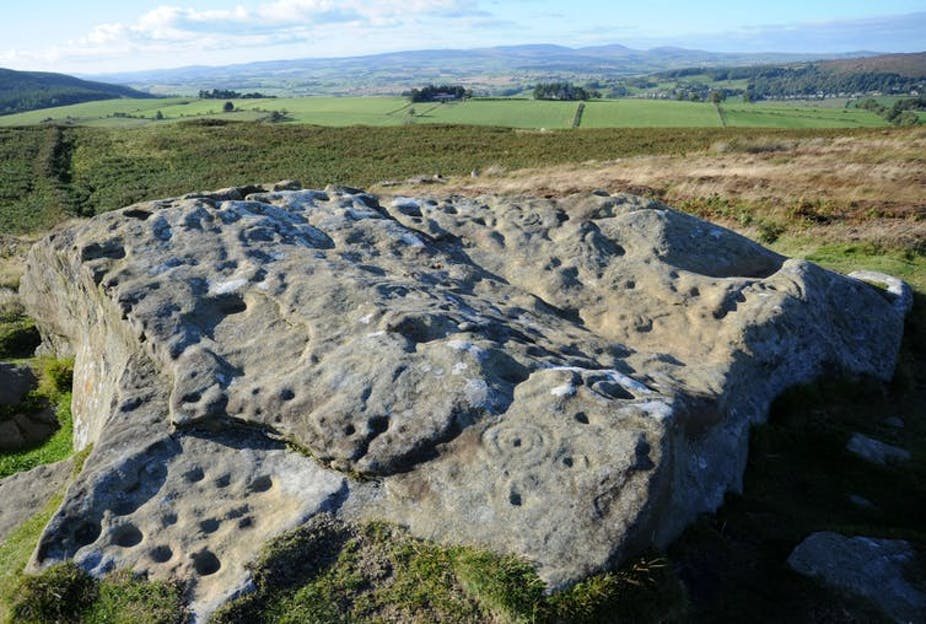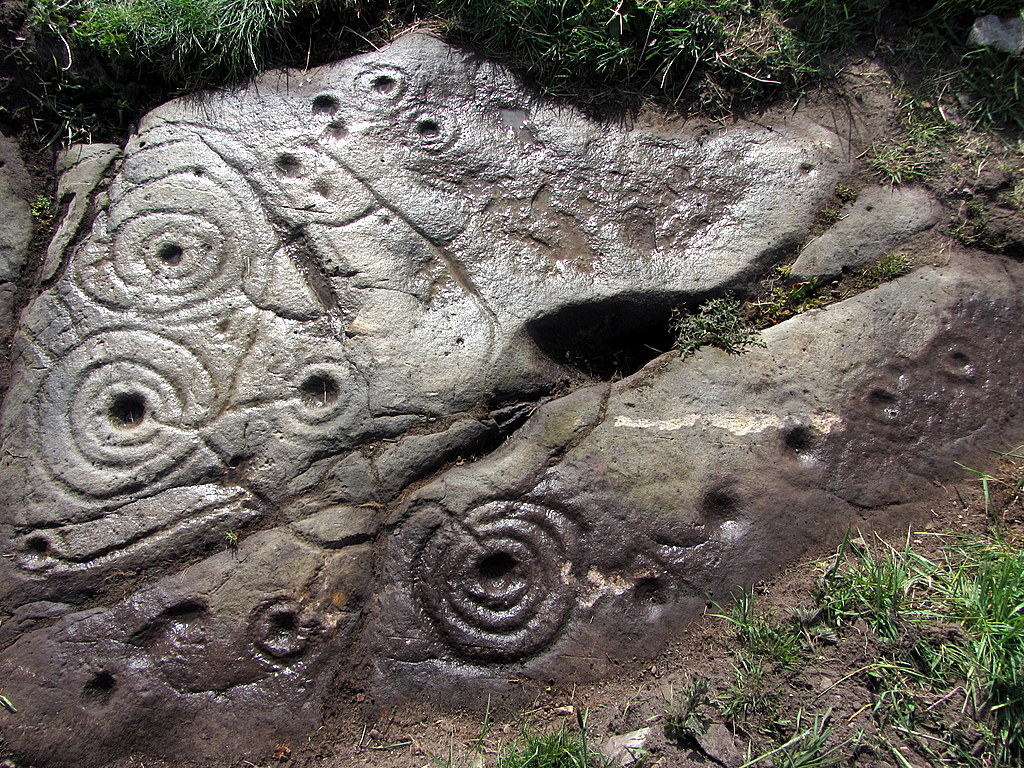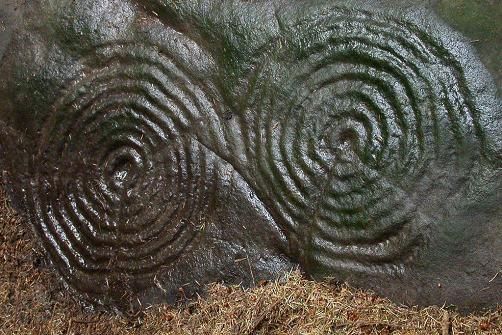The Northumberland Spirals

Northumberland is the northernmost county in England, bordering Scotland, and it’s home to an ancient rock art site famous for the widespread use of spirals, one of the symbols that is globally found in ancient sites from all over the planet.
The history of the county is incredibly old, having its roots in prehistoric times. Evidence is provided by the discovery of thousands of strange and mysterious sculptures carved into the rock, which researchers say could be more than 6,000 years old.
These extraordinary prehistoric works of art remained undisturbed for thousands of years until researchers from Newcastle University and the English Heritage unearthed them mainly in three areas: Roughton Linn, Weetwood Moor, and Lordenshaw.
The Northumberland rock art includes a series of spirals and intricate concentric designs, interconnected rings, and circular cups. However, even though being one of Britain’s most important collections of prehistoric art, its precise meaning still eludes researchers.
The major contributions to the study of Northumberland’s rock art came from Dr. Stan Beckensall, an authority among experts in stone art.
Starting in the mid-1960s, the scholar spent almost 40 years researching and studying the site, cataloging more than 1,500 sculptures. After completing the study, Beckensall donated the complete archive of his studies to Newcastle University.
Basically, Beckensall laid out the fundamental basis for the subsequent discoveries and analyses that were carried out through the years.
The latest expedition was organized by English Heritage researchers, whose most interesting discovery was that of a large boulder carved at the site of Barnigham Moor, an area 300 meters high at the foot of the mountain ranges.

The engravings show numerous abstract figures, cup-shaped grooves, and holes. The work is so well preserved that you can still see the signs of the workmanship.
“There are a lot of theories about what engravings mean,” explains Kate Wilson, English Heritage inspector of ancient documents. “They could also have a spiritual meaning. In ancient communities, the places where the ‘mountains touch the sky’ were considered the domain of supernatural ancestors. Most of the rock art is found in those areas”.

The petroglyphs show concentric circles and spiral formations. According to the researchers, these drawings show that something in the Mesolithic society was changing: “There is an abyss of time and civilization between the society that carved these stones and ours,” says one of the volunteers who participated in the discovery. “Their true meaning is something we may never understand.”
The spiral and the “labyrinth” of circles with the central dot is a widespread theme in ancient rock art, not only in England, but a worldwide recurring pattern that we can observe in North America, China, Japan, India, and throughout all of the Mediterranean Area.
